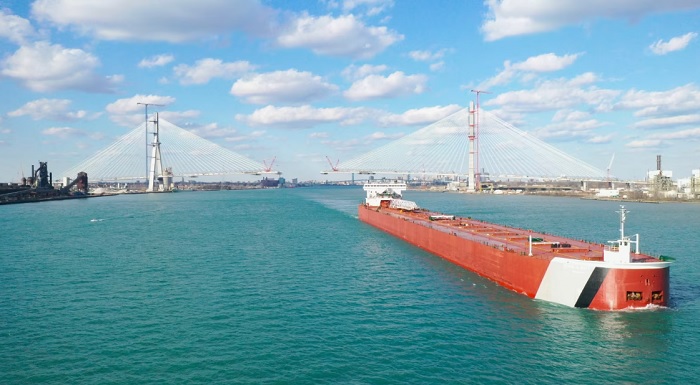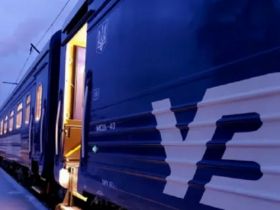Navigating the Detroit border trucking route between Detroit and Windsor presents unique challenges for dry-van operators. With high traffic volumes and stringent customs requirements, delays at the Windsor crossing can disrupt supply chains and increase costs. Key factors such as efficient broker coordination, timely ACE manifest submission, and compliance with CBSA eManifest regulations are essential to streamline processes. Programs like the FAST pass help expedite border clearance, reducing wait times and improving aisle flow through customs. Additionally, managing bridge toll payments and understanding PARS procedures further optimize transit efficiency. Addressing these challenges is crucial for ensuring smooth, cost-effective border crossing on this vital international freight corridor.
2. Understanding paperwork timing for dry-van shipments
Timing is critical when handling paperwork for Detroit border trucking, especially on the Detroit–Windsor dry-van route. Submitting the ACE manifest and CBSA eManifest well before reaching the Windsor crossing ensures compliance and smooth aisle flow through customs. Coordinating closely with your customs broker helps prevent last-minute errors that can cause costly delays. Additionally, timely PARS filings enable pre-arrival release, expediting clearance. Utilizing the FAST pass program further accelerates processing by reducing wait times for compliant carriers. Don’t overlook bridge toll payments in your preparation — settling these promptly avoids hold-ups. Mastering paperwork timing is essential to streamline operations and maintain efficient border crossings on this busy international freight corridor.
3. Navigating CBSA eManifest and ACE manifest requirements
Efficient Detroit border trucking hinges on mastering CBSA eManifest and ACE manifest protocols for dry-van shipments. Both documents must be submitted electronically and well in advance of arrival at the Windsor crossing to ensure seamless aisle flow. Accurate broker coordination is vital — errors or omissions can trigger costly delays or inspections. The ACE manifest facilitates U.S. Customs clearance, while the CBSA eManifest alerts Canadian authorities, enabling synchronized processing. Incorporating PARS filings alongside manifests further expedites pre-arrival release, minimizing wait times. Leveraging the FAST pass program complements this by granting trusted carriers priority lanes, accelerating border crossing. Don’t forget to reconcile bridge toll payments beforehand, as outstanding fees can stall clearance. By aligning electronic submissions and communications, dry-van operators can significantly reduce friction at the border and maintain streamlined Detroit–Windsor transit operations.
4. Broker coordination best practices for seamless processing
To ensure seamless processing on Detroit border trucking routes, especially for dry-van shipments crossing at Windsor, effective broker coordination is essential. Follow these best practices:
- Establish Clear Communication: Maintain consistent, real-time dialogue with your customs broker to quickly resolve issues and confirm document accuracy.
- Submit ACE and CBSA eManifest Early: Work with your broker to file ACE manifests and CBSA eManifests well before arrival, preventing delays in aisle flow.
- Coordinate PARS Filings: Ensure your broker submits PARS promptly for pre-arrival release, speeding up Canadian Customs clearance.
- Verify Bridge Toll Payments: Confirm all bridge tolls are settled to avoid hold-ups at the Windsor crossing.
- Leverage FAST Pass Benefits: Collaborate with your broker to enroll and comply with FAST pass requirements, gaining access to expedited lanes.
- Double-Check Documentation: Routinely review all paperwork with your broker to eliminate errors that could slow processing or trigger inspections.
By implementing these broker coordination tactics, dry-van carriers can optimize border crossing efficiency and reduce costly delays on the Detroit–Windsor corridor.
5. Utilizing the FAST pass for expedited Windsor crossing
The FAST pass is a game-changer for dry-van carriers navigating Detroit border trucking at the Windsor crossing. Designed for low-risk, pre-approved drivers and carriers, FAST enables access to dedicated expedited lanes, significantly reducing wait times. To maximize its benefits, ensure your ACE manifest, CBSA eManifest, and PARS filings are accurately submitted and broker coordination is seamless. Timely bridge toll payments and error-free documentation maintain smooth aisle flow, allowing you to leverage FAST fully. Enrolling in the FAST program not only streamlines customs clearance but also enhances predictability, helping dry-van operators maintain tight schedules and reduce border-related delays along this critical international route.
6. Managing PARS and bridge toll efficiently
Efficient management of PARS and bridge tolls is crucial for smooth Detroit border trucking on dry-van routes through the Windsor crossing. Submitting PARS filings promptly, in coordination with your customs broker, enables pre-arrival release, accelerating Canadian Customs clearance and enhancing aisle flow. Delays or inaccuracies in PARS can cause costly hold-ups. Equally important is timely payment of bridge tolls, as unpaid fees can stall processing despite accurate ACE manifest and CBSA eManifest submissions. Combining disciplined PARS management with advance bridge toll reconciliation and leveraging the FAST pass ensures seamless, expedited border crossing — maximizing efficiency and minimizing delays on this vital international corridor.
7. Optimizing aisle flow at Ambassador and Gordie Howe bridges
Maximizing aisle flow at the Ambassador and Gordie Howe bridges is critical for efficient Detroit border trucking of dry-van shipments. Both crossings experience heavy volumes, making streamlined processes essential to minimize congestion and wait times. Key to optimizing aisle flow is precise submission of ACE manifest and CBSA eManifest data well ahead of arrival, allowing customs officials to pre-screen shipments effectively. Close broker coordination ensures PARS filings and bridge toll payments are settled promptly, preventing last-minute disruptions. Utilizing the FAST pass at either bridge grants access to designated expedited lanes, further reducing delays. Additionally, monitoring real-time traffic updates and adjusting arrival times can help avoid peak congestion periods. By integrating accurate documentation, proactive communication with brokers, and leveraging FAST pass benefits, dry-van carriers can significantly enhance aisle flow through these critical Windsor crossing points — ultimately cutting border delays and improving supply chain reliability along the Detroit–Windsor corridor.
8. Conclusion: Maximizing efficiency in Detroit–Windsor dry-van border crossings
Efficient border-crossing procedures are crucial for seamless Detroit–Windsor dry-van routes, impacting supply chain reliability and cost-effectiveness. This guide highlighted key strategies — from leveraging advanced customs technologies and pre-clearance programs to optimizing documentation accuracy and driver training. Collaborative partnerships between carriers, customs authorities, and brokers further streamline processes, reducing delays and enhancing cargo security. Embracing data-driven insights and real-time communication tools empowers stakeholders to anticipate disruptions and maintain steady flow. By integrating these best practices, logistics providers can significantly cut wait times, boost operational efficiency, and reinforce the vital trade corridor’s competitiveness in North America’shauling transportation landscape.
FAQ
- 1. What are the key steps to ensure efficient border-crossing for Detroit–Windsor dry-van routes?
Efficient border-crossing involves pre-clearance documentation, using trusted traveler programs, real-time communication with customs officials, and scheduling shipments during off-peak hours to minimize delays.
- 2. How can carriers reduce wait times at the Detroit–Windsor border?
Carriers can reduce wait times by enrolling in programs like FAST (Free and Secure Trade), ensuring all paperwork is accurate and complete, utilizing electronic data interchange (EDI) systems, and planning crossings during less busy periods.
- 3. What documentation is required for dry-van shipments crossing the Detroit–Windsor border?
Essential documents include commercial invoices, bills of lading, customs declarations, and any necessary permits or certificates related to the cargo. Ensuring these are prepared in advance helps speed up processing.
- 4. Are there specific regulations for dry-van cargo when crossing between Detroit and Windsor?
Yes, shipments must comply with both U.S. and Canadian customs regulations, including security protocols, cargo inspections, and adherence to transportation and hazardous materials guidelines if applicable.
- 5. What technologies are recommended to streamline border-crossing procedures for dry-van routes?
Technologies such as GPS tracking, electronic customs filing systems, automated gate systems, and mobile apps for real-time updates can significantly enhance the efficiency of border crossings on these routes













Leave a Reply